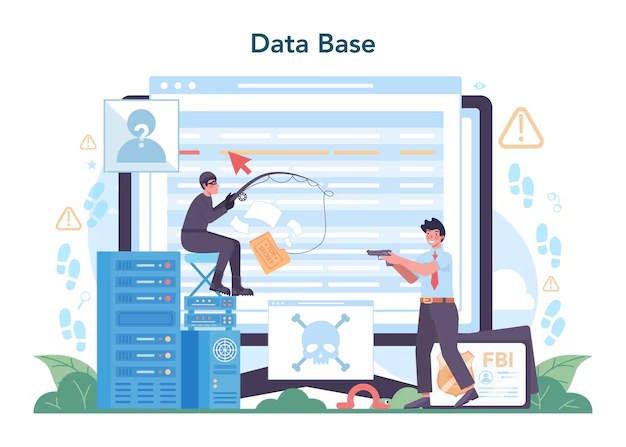Throughout time, humanity has continuously sought to optimize collaborative efforts to achieve shared goals. From ancient civilizations to today’s sophisticated organizations, structures have emerged to facilitate planning, execution, and evaluation of collective tasks. This dynamic process has given rise to various methodologies, each designed to streamline activities and enhance productivity.
Chronicling the journey of these approaches unveils a fascinating narrative filled with innovation and adaptation. As societal needs evolved, so did techniques aimed at coordinating efforts across multiple domains. Key milestones reflect shifts in thought and practice, illustrating how individuals and teams worked to harness their resources effectively.
By examining pivotal moments in this evolution, we gain insights into current frameworks that govern cooperative endeavors. Understanding past developments allows professionals to appreciate the foundations upon which modern strategies rest, enlightening today’s practices with lessons learned from yesterday’s challenges.
Origins of Project Management Practices
The roots of structured work endeavors can be traced back to ancient civilizations, where groups of individuals collaborated to achieve common goals. As societies evolved, so did the need for organized approaches to allocating resources, timelines, and task assignments. This evolution laid the groundwork for what we now recognize as systematic methodologies aimed at enhancing efficiency and reducing uncertainty in collaborative efforts.
Ancient Civilizations
Historical records reveal that various ancient cultures employed techniques resembling contemporary organizational strategies. The Egyptians, for instance, managed large-scale construction projects such as the pyramids, utilizing a well-defined hierarchy and resource management systems. Similarly, the Romans demonstrated remarkable skills in coordinating extensive infrastructure ventures.
Modern Developments
With the Industrial Revolution came significant advancements in technology and production, pushing the need for more formal approaches to orchestrating complex operations. This period marked a crucial transformation, leading to the development of structured frameworks that prioritize planning, execution, and monitoring of varied undertakings.
| Period | Key Developments |
|---|---|
| Ancient Times | Pyramid construction, Roman infrastructure |
| Industrial Revolution | Emergence of formalized techniques, focus on efficiency |
| 20th Century | Introduction of project planning tools, Gantt charts |
Evolution of Methodologies Over Time
Over decades, practices and techniques aimed at delivering projects efficiently have undergone significant transformation. Each era brought about unique challenges and opportunities, prompting teams to adopt various approaches that reflect contemporary needs and technological advancements. This evolution showcases how adaptable and versatile the discipline has become in addressing ever-changing demands.
Early Approaches
Initially, methodologies were quite informal, relying heavily on basic planning and oversight. Techniques centered around simple delegation and oversight, often leading to unpredictable outcomes. As industries expanded and projects increased in complexity, there arose a need for more structured strategies, laying the groundwork for future transformations.
Modern Frameworks
In recent years, frameworks such as Agile and Waterfall have gained prominence, emphasizing different aspects of efficiency and flexibility. Agile promotes iterative progress and encourages adaptability to changing circumstances, while Waterfall offers a linear approach ideal for well-defined projects. These methodologies reflect a deeper understanding of team dynamics and project life cycles, showcasing the continuous evolution towards more effective practices.
Key Figures in Project Management History
Throughout the evolution of organized efforts, certain individuals have emerged as pivotal influences, shaping practices and methodologies. Their contributions have laid the groundwork for modern approaches, inspiring future generations to refine and innovate within this dynamic field.
Henry Gantt
Henry Gantt, an American engineer and management consultant, is renowned for developing the Gantt chart in the early 20th century. This visual tool revolutionized planning by providing a clear timeline for tasks and resources, facilitating better communication and coordination in various endeavors.
Frederick Taylor
The principles of Frederick Taylor, often referred to as the father of scientific management, emphasized efficiency through systematic work processes. His methodologies focused on optimizing productivity and labor organization, significantly impacting leadership strategies and decision-making approaches in numerous sectors.
Technological Advancements and Their Impact
Innovations in technology have continually reshaped various sectors, influencing workflows, communication methods, and overall efficiency. These advancements have not only streamlined processes but also introduced new challenges and opportunities for professionals across industries.
Key Areas of Influence
- Communication Tools: Enhanced platforms facilitate real-time collaboration, allowing teams to connect seamlessly regardless of geographical boundaries.
- Project Software: Comprehensive applications provide functionalities that support planning, tracking, and reporting, significantly reducing administrative workload.
- Data Analytics: Advanced analytical tools enable better decision-making by offering insights derived from vast amounts of data.
Outcomes of Technological Integration
- Increased Efficiency: Streamlined processes lead to quicker turnaround times and improved resource management.
- Enhanced Transparency: Greater visibility into tasks and progress fosters accountability and trust within teams.
- Improved Risk Management: Predictive analytics and monitoring tools help identify potential issues before they escalate.
Influence of Project Management Standards
Standards play a crucial role in shaping processes and enhancing effectiveness in various fields. Their implementation provides a cohesive structure that assists teams in achieving goals efficiently and consistently. As disciplines evolve, the significance of these frameworks becomes increasingly evident.
Among key benefits, we can identify:
- Establishment of a common language across diverse teams.
- Improvement of communication, reducing misunderstandings and confusion.
- Elevation of quality through adherence to best practices.
- Facilitation of resource allocation and scheduling, leading to optimized performance.
Furthermore, widely accepted guidelines contribute to:
- Standardizing processes, which aids in scaling operations.
- Enhancing stakeholder confidence by demonstrating commitment to excellence.
- Providing valuable educational resources for practitioners at all levels.
As a result, the adoption of established norms is essential for fostering an environment where efficiency thrives, innovation flourishes, and outcomes are consistently positive.
Future Trends in Project Management
As organizations adapt to an ever-evolving landscape, innovative approaches are emerging to enhance efficiency and collaboration in team endeavors. These advancements are paving the way for improved methodologies that respond to changing demands and technological advancements.
Agile methodologies continue to gain traction, enabling teams to remain flexible and responsive to unforeseen challenges. This iterative approach encourages regular feedback and adaptation, allowing projects to evolve based on real-time insights.
Another significant shift is the increasing reliance on automation. Utilization of artificial intelligence and machine learning tools streamlines repetitive tasks, freeing up valuable human resources for more strategic roles. This transition not only improves productivity but also enhances decision-making processes through data-driven insights.
Remote collaboration tools are becoming essential, reflecting a broader acceptance of distributed teams. Organizations are leveraging software that facilitates communication and collaboration across distances, creating a more inclusive work environment and tapping into a global talent pool.
Moreover, the importance of sustainability in project endeavors cannot be overlooked. Professionals are increasingly focused on incorporating eco-friendly practices, ensuring that the outcomes of initiatives contribute positively to the environment. This trend aligns with a growing societal demand for responsible practices.
Finally, enhancing skills development is critical as professionals navigate this evolving landscape. Continuous learning opportunities and training programs are key to ensuring that teams are equipped to tackle new challenges and leverage emerging tools effectively.
Questions and answers: Brief history project management infographic
How has the history of project management evolved from ancient projects to modern-day methodologies, and what can we learn from this progression?
The history of project management has evolved significantly, starting with ancient projects like the Great Wall of China and Egyptian pyramids, where organized labor, resource management, and structured planning were essential. By the 1950s, structured methodologies like the Critical Path Method (CPM) and Program Evaluation Review Technique (PERT) were developed to improve project execution in complex projects. This evolution shows how structured approaches to manage projects have been crucial in achieving success across different eras, leading to the development of Agile and Scrum methodologies in modern project management.
Why is it beneficial to explore a brief history of project management, and how can this insight impact approaches to project management today?
Exploring a brief history of project management helps project managers understand the importance of structured planning, resource allocation, and adaptability. From ancient times through the 21st century, various project management methodologies have been designed to address specific project needs, such as CPM for scheduling and Agile for flexibility. This historical insight emphasizes the need for adaptable approaches to project management, helping modern project managers apply proven techniques and emerging technologies to deliver successful projects in today’s complex environments.
How did methodologies like CPM and PERT change project management in the 1950s, and why are they still relevant in industries like healthcare?
In the 1950s, methodologies like CPM and PERT introduced scientific approaches to scheduling and risk management, revolutionizing the way project managers plan and execute complex projects. CPM helps identify the critical path in a project timeline, while PERT provides a way to manage project uncertainties. These methodologies remain relevant in industries like healthcare, where precise scheduling and resource allocation are critical. They continue to help project managers improve project outcomes by providing structured, time-tested approaches to project management.
What role has Agile project management played in workforce management, and why is it particularly popular in the 21st century?
Agile project management has played a transformative role in workforce management by promoting collaboration, flexibility, and iterative progress. In the 21st century, Agile’s adaptability has become essential for fast-paced industries like technology and marketing, where project requirements can change quickly. By using Agile methods, project managers can manage projects more effectively, adapt to new information in real-time, and engage cross-functional teams. This approach aligns with modern project management needs, where responding to market changes is critical for project success.
How does Replicon support proper project management, and why is this important for maintaining project timelines?
Replicon supports proper project management by providing tools for time tracking, resource allocation, and real-time project updates. This comprehensive platform enables project managers to oversee tasks effectively and monitor project timelines closely, ensuring that projects stay on track. Without proper project tracking, it’s challenging to meet deadlines and manage resources, so Replicon’s solutions are essential for teams aiming to deliver projects within scope and on time.
What can we learn by looking back at the past 2500 years of project management, and how does the history of project management timeline reflect evolving needs?
Looking back at the past 2500 years of project management reveals how structured approaches have been essential for successful project execution, from the construction of ancient Egyptian pyramids to modern engineering feats. The history of project management timeline reflects evolving needs, with methodologies developing to address new challenges and complex requirements in various industries. This timeline helps you understand the importance of adapting techniques to specific project demands, a principle that remains relevant today.
Why might project managers use modern tools like Jira and Mavenlink, and how do these tools enhance virtual project management?
Project managers use modern tools like Jira and Mavenlink because they offer powerful features for virtual project management, including task tracking, collaboration, and real-time updates. In cloud-based environments, these tools enable teams to work together seamlessly across locations and time zones. Features such as sprint planning in Jira and resource management in Mavenlink allow project managers to keep the entire team aligned, helping them execute projects efficiently even without in-person meetings.
How can the concept of blockchain be applied to project management, and what advantages might it offer?
Blockchain can be applied to project management by providing a secure and transparent way to track project transactions, approvals, and milestones. With blockchain, all project updates and modifications are recorded in a decentralized ledger, reducing the risk of data tampering. This approach can boost accountability and enhance trust within the project team and with clients, offering advantages in industries where security and transparency are critical. As project management continues to evolve, blockchain has the potential to add value by improving data integrity across projects.


